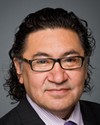Mr. Chair, I will be 10 minutes and then will allow five minutes for questions for the minister.
I am proud to stand today and talk about what our government is doing for first nations with respect to providing improved water and waste water services to their residents. Our government engaged in the largest comprehensive study of water and waste water systems this country has ever seen, identifying and going through every water and waste water system so that we could prioritize how we could improve water and waste water.
The Government of Canada and first nations have shared the goal of ensuring that first nations have the same access to safe, clean drinking water in their communities as all other Canadians do. Access to safe drinking water, the effective treatment of water and the protection of sources of drinking water in first nations communities is critical to ensuring the health and safety of first nations. I want to assure all members in this House tonight that this is an area of great concern for our government.
We are targeting three key areas to ensure that residents of first nations communities can readily access clean and safe drinking water, like all Canadians. The three things we look at are enforceable standards and protocols; infrastructure investments in specific projects; and enhanced capacity-building, operations and training for those treatment systems.
In the area of enforceable standards and protocols, I have to say that we have made significant strides. On February 29, 2012, after significant consultation with first nations, Bill S-8, the safe drinking water for first nations act, was introduced in the Senate. This is enabling legislation. If passed, it would make it possible for our government to work with first nations, and not just first nations but also other stakeholders, to develop regulations comparable to those that safeguard drinking water in other places across Canada.
Currently, legally enforceable protections governing drinking water and waste water do not exist on most first nations lands. It is our government's view that anyone committed to better safeguarding water quality on first nations lands should see the importance of supporting this legislation. Of course, I urge my colleagues on the other side of the House to support this legislation when it comes back for a vote. It is now moving to the committee. This legislation would clearly lay out the roles and responsibilities of all parties involved in drinking water in first nations communities.
I want to underscore that the proposed legislation is the product of engagement between the government and first nations on safe drinking water legislation and enforceable standards over the last seven years. That is how long this consultation has been going on. There have been numerous recommendations concerning federal water regulations, including reports by the Commissioner of the Environment and Sustainable Development, the Office of the Auditor General, the Expert Panel on Safe Drinking Water for First Nations, and the Senate Standing Committee on Aboriginal Peoples. There was also the “National Assessment of First Nations Water and Wastewater Systems”, which is the study I referred to at the beginning of my speech.
First nations have also supported the concept of water regulations. When the proposed legislation was first introduced, Chief Lawrence Paul of the Millbrook First Nation, who is also the co-chair of the Atlantic Policy Congress of First Nation Chiefs Secretariat, spoke to the potential of the bill for first nations communities. He said:
First Nations will be able to look forward to having the same protections that other Canadians have around the provision of drinking water, water quality standards and the disposal of wastewater in their communities. This is not only an important health and safety issue, but will help build confidence in our infrastructure and help create a better climate for investment.
Should the proposed legislation be passed, further engagement with first nations on the development of federal regulations would follow. This would support the development of federal regulations that would be tailored to the unique circumstances of first nations. However, the opposition has indicated yet again that they will not support this important legislation for first nations. I do not understand this opposition. The time for this legislation is now.
Creating federal regulations will take time, and they would be implemented over a number of years. This would allow the government and first nations to bring water and waste water infrastructure and capacity to the level required to meet those very regulations.
Our government's vision for supporting first nations to improve water and waste water services for the residents also includes capital investments. Between 2006 and 2014, the federal government will have invested approximately $3 billion in water and waste water infrastructure and related public health activities to support first nations communities in managing their water and waste water systems. That is a significant investment.
Economic action plan 2012 also included an additional $330 million over two years to help sustain progress made to build and renovate water infrastructure on reserve and to support the development of a long-term strategy to improve water quality for first nations. More specifically, this money is going towards training for operators of water and waste water systems on reserve, operating costs of water and waste water systems and capital investments for the highest-risk systems.
Because of the comprehensive study we did, the first of its kind, we were able to prioritize water and waste water systems that are in need of immediate help. That is what we are doing with those funds.
With the new funding last year, the government was able to prioritize investments to high and medium-risk systems in over 50 first nations communities, including Canoe Lake First Nation, Tallcree First Nation and Nazco First Nation. These estimates include $137.4 million for the first nations water and waste water action plan. Again, these are additional funds being invested in water and waste water.
This funding will be allocated in 2013 and 2014 in three areas of planned expenditures. Operations and maintenance will receive $46.1 million, $30.2 million will be for training for first nations and $50.8 million will go toward capital investments. However, that is not all. Health Canada is also supporting first nations with an investment of $54.8 million committed through economic action plan 2012, which is for water-related public health activities.
The federal government recognizes that in some first nations communities, there are issues regarding in-home access to water and waste water services. Manitoba's four Island Lake first nations are one such example. I am pleased to say that this government invested $5.5 million in 2011 to bring running water to 100 houses in that community.
I want to underscore the fact that our government is committed to ensuring that first nations have the same access to safe, clean drinking water in their communities as all other Canadians. This means not only setting our sights on reducing the number of medium and high risk systems, but also directing investments to capacity and training to operate and maintain those systems. The 2011 national assessment results underscore the critical importance of having trained and certified operators to reduce the risk and help ensure that the drinking water in first nations communities is safe. Operation and maintenance, operator qualification and record keeping account for 60% of the risk measured.
As I outlined earlier, the federal government's economic action plan 2012 year one investment includes more than $30 million for training first nations. Our government provides funding for operator training courses and for operator certificate training and registration costs in all regions. Training helps to ensure that operators have the level of training and skills required to operate and maintain the water and waste water systems.
I want to take a moment to highlight another important program. That is, of course, the government's circuit rider training program. The program, for those who do not know, is a specialized training program that provides first nations operators with ongoing on-site training and mentoring on how to operate their water and waste water systems. We invest approximately $10 million a year into the circuit rider training program across the country.
It is clear that this government has made working with first nations partners to improve on reserve water and waste water a priority. Through progress on enforceable standards and protocols, through sustainable capital investments and by supporting enhanced capacity building and operation training, we are delivering on those results.
I am confident we will continue to deliver results and make progress on this important issue.






